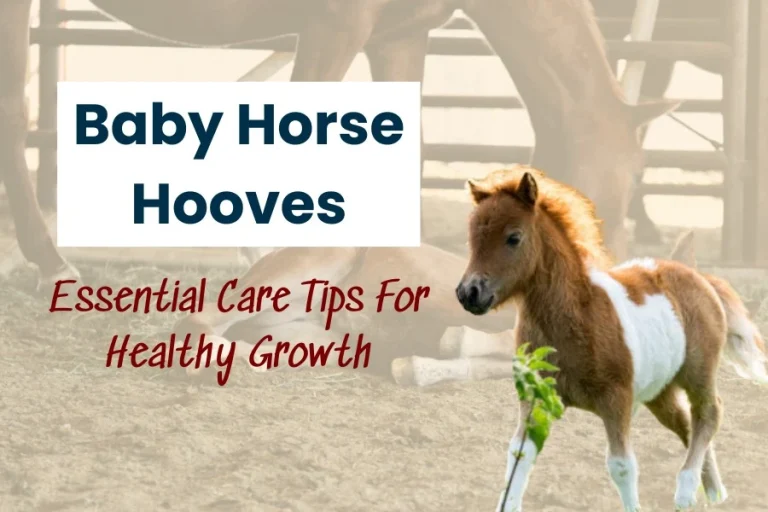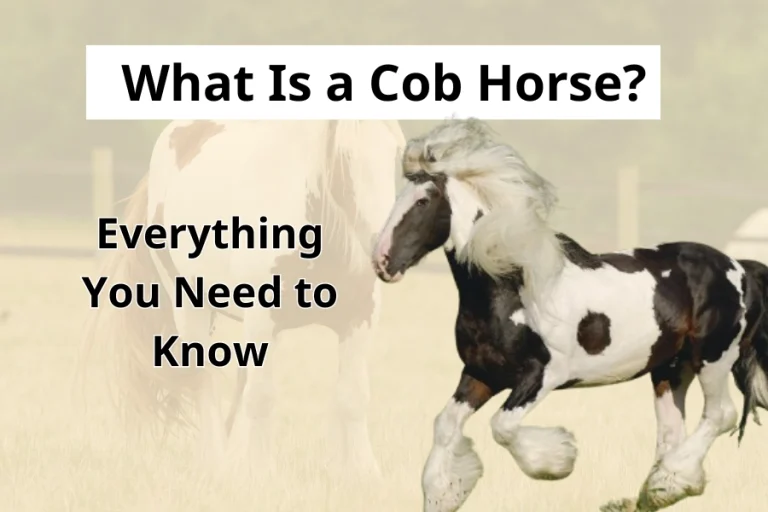All You Need To Know About Dappled Grey Horse

Around the world, a variety of horses have attractive appearances, speedy movement, and unique behaviors. From majestic Arabian to elegant Fresian with its flowing mane, each breed represents its special features that will steal your heart. Among those, the dappled grey horse always catches our attention with their striking and beautiful coats.
Would you like to know more about this wonderful type of horse? If you are an animal lover, this guide will walk you through the unique characteristics that set these horses apart. You also learn more about how to keep them looking their best with essential care tips.
Overview Of Dappled Grey Horses
Have you ever wondered why horses have dotted spots on their coats? The answer is here!
What Are Dappled Grey Horses?
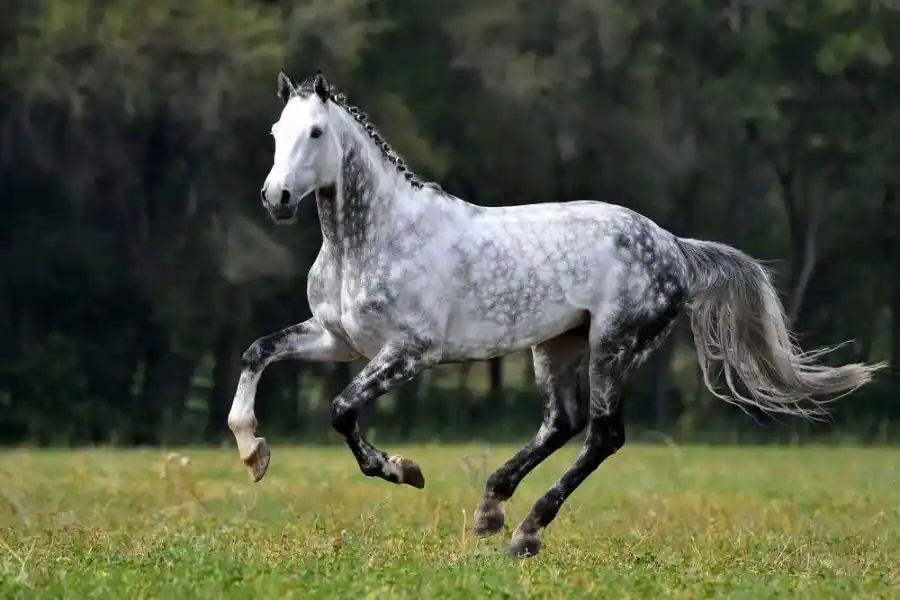
The dappled grey horse is known for their distinctive coat called dapples. Circular spots of lighter or darker grey backgrounds make them stand out more from other types of horses. These dapples are visible in younger horses and are likely to fade as the horse ages, often leading to a nearly white coat in their senior years.
The dotted grey color is not particularly for specific breeds but can be found in various types. This unique coat is a result of a dominantly grey gene, creating a striking and beautiful visual for horses.
Originals Of The Dappled Grey Horse
According to a Swedish study in 2008, the dappled grey horse is thought to have originated from wild ones from over 200 years ago, through a long time of natural selection.
This mottled coat color helps camouflage horses in different environments. This lets a horse run away from predators.
Stages of Color Change in Dappled Grey Horses
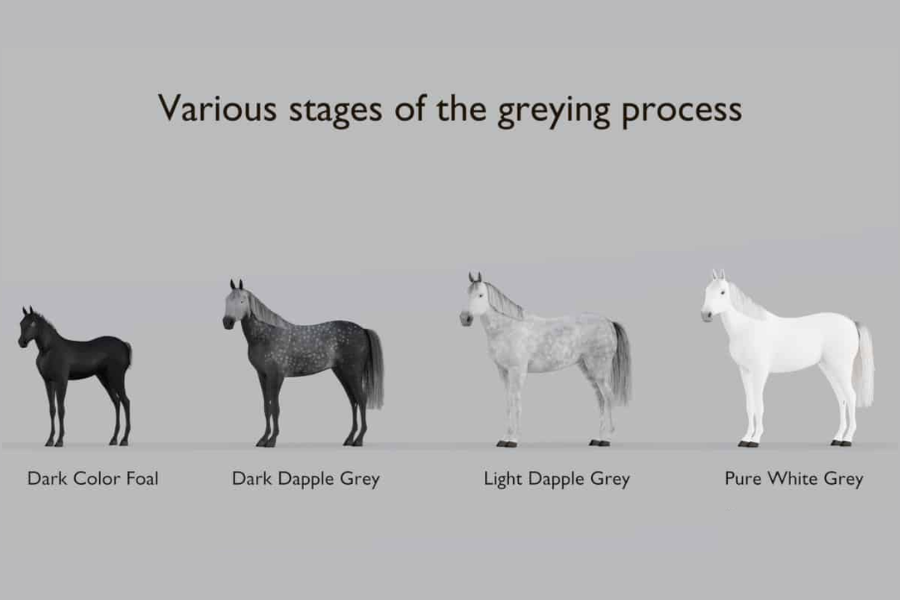
The color transformation of a dappled grey horse is a unique process, starting with their birth color to many steps when they are older. Here is a fascinating journey that will surprise you.
Initial Color And Foal Stage
Firstly, baby horses were born with black, brown, or chestnut coats. As they grow, the greying process starts, with white hairs gradually mixing into their original coat color. At that time, initial signs of dapping, where small, lighter spots start to appear amidst the darker fur.
Young Adulthood
During young adulthood, the greying process continues, when the horse’s coat transitions towards a lighter shade. Their dapples become more vibrant and defined, creating a special, contrasting pattern that is highly admired. For example, Appaloosa is one of the most beautiful horses in the world due to its spot on their coat.
Mature Adulthood
When grey horses grow up, their coat becomes progressively lighter and dapples may start to fade. They will have a more grey or even white appearance, although some dapples may still be there. This stage is often considered as the peak of a grey horse’s strength and vitality.
Senior Years
Finally, the dappled grey horse tends to lose most of their dapples, leading to an all-white or very light grey coat. Generally, the longevity of horses is from 15-30 years, so dapples will disappear more quickly at the end of life.
Despite some changes in their coat, senior dappled grey horses remain distinguished and elegant, often requiring special care to enhance their well-being.
Factors Affect Dapples On Grey Horses
Dappling spots on dappled grey horses can be attributed to a variety of reasons, including genetics, diet, seasons, and well-being.
Genetics
Of course, the presence and patterns of dapples are strongly influenced by horses’ genetic makeup. As such, some grey horses are genetically more likely to have dapples than others. Although the specific genes causing dapples are yet not fully understood, the genes responsible for coat color genetics do, at least in part.
Diet
A dappled grey horse’s diet plays a significant role in how bad or good their coat can look. Horses fed a good, well-rounded diet with adequate levels of vitamins and minerals (zinc, copper,…) tend to have more light dapples. If having a full and healthy diet, the weight of horses is usually 400-500 kilograms. Lacking nutritional factors in diets can lead to dull and uneven coat coloration.
Seasonal changes
Dappled patterns also vary with seasonal changes. Many dappled grey horses develop dapples during the spring and summer months. To explain, increased exposure to sunlight and a change in diet will help them have more beautiful dapples.
Heath and coat conditions
Systemic health in a dappled grey horse may affect its coat. Dapples will be most vivid in a healthy horse, with proper care, and a well-attended coat. Poor health or skin problems can change or even cause the dapples to fade.
Caring Requirements For Dappled Grey Horses
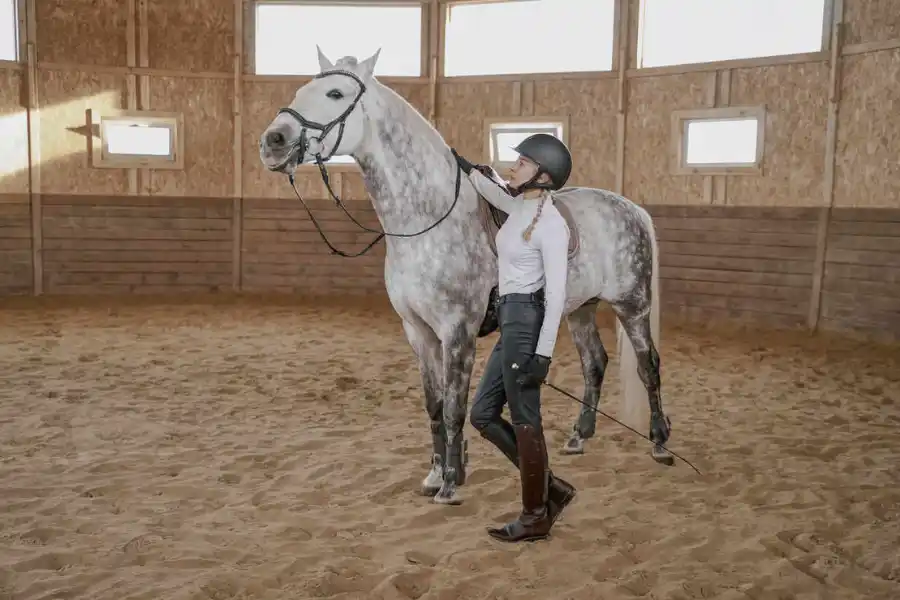
Dappled grey horses require special attention to their coat and skin. Regular grooming will help not only maintain their coat’s health and appearance but also remove dirt, and dead skin cells. Note that using a gentle shampoo and conditioner can improve the shine and softness of their coat, making the dapples more vibrant.
Nutrition diet plays a vital role in the health of the dappled grey horse. You should feed them high-quality forage and a balanced diet rich in vitamins, and minerals, supporting their overall well-being. Supplements, for example, omega-3 fatty acids can also enhance skin and coat condition.
At least, regular veterinary check-ups are crucial to ensure health and longevity. ScienceBlogs shows that 75% of dappled grey horses over 15 years of age tend to develop benign melanomas, basically skin cancer.
Almost all melanomas are generally non-threatening, there is a risk of them becoming malignant if untreated. This susceptibility is linked to the specific genetic mutation responsible for their unique coat color, which also influences the growth of melanocytes.
FAQs
Are you curious about the unique characteristics and care requirements of dappled grey horses? Let’s explore some fascinating facts and helpful tips with us!
The answer is no. Dapples are a phase in the greying process that some, but not all. Some of them may never show this pattern or may have dapples that fade as they age. The appearance of dapples will depend on several factors, including age, and overall health,…
Dapples on grey horses typically last through their young adulthood and begin to fade when they are mature. Mostly dapples are often seen in their coats when the horse is 3 to 10 years old. Time flies, the coat lightens and some dapples become less dominant, resulting in disappearing almost entirely in senior years.
This is a puzzle question. In reality, breeding specifically for dapples in grey horses can be challenging because of the complex genetics involved. While it is possible to select grey horses that tend to have dapples, the presence and intensity of dappling can vary widely even among offspring of dappled parents. Additionally, not all grey horses will develop dapples.
No, almost all breeds can have dapples on their coats. While the dapples can make these horses more visually stand out, they are a common feature among grey horses, especially in their young adulthood.
Absolutely yes! Grey horses, including the dappled grey horse, tend to be more sensitive to certain skin conditions due to their brighter pigmentation. They will have some health issues, such as scratches (pastern dermatitis) and sunburn. Because their lighter-colored skin offers less natural protection against environmental factors. This sensitivity is particularly notable in pink skin areas, which can be more susceptible to skin health problems.
Final Word
In conclusion, dappled grey horse’s coats are a breathtaking combination of elegance and charm, making them stand out from any animal. Hope that you will have more knowledge about these stunning types of horses, from their original breeds to caring tips.

